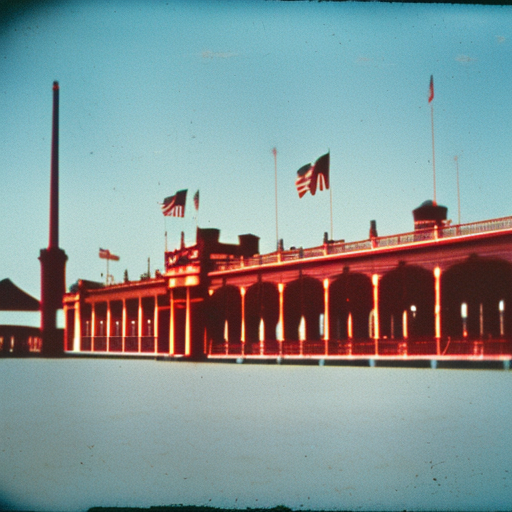Summary: The Louisiana Purchase Exposition, also known as the St. Louis World’s Fair, was a major international exhibition held in St. Louis, Missouri, in 1904. It was organized to celebrate the centennial of the Louisiana Purchase, which doubled the size of the United States. The fair showcased advancements in technology, culture, and industry, attracting millions of visitors from around the world. It left a lasting impact on the city of St. Louis and the United States as a whole.
The Planning and Purpose of the Exposition
The idea for the Louisiana Purchase Exposition was conceived in 1898 by David R. Francis, the mayor of St. Louis at the time. He aimed to commemorate the centennial of the Louisiana Purchase and promote St. Louis as a center of commerce and industry. The exposition was designed to showcase the progress and achievements of the United States and other nations.
The Fairgrounds and Attractions
The fairgrounds covered an area of 1,200 acres and featured numerous exhibition halls, pavilions, and attractions. The main focal point was the Festival Hall, a grand structure that housed art exhibits and concerts. Other notable attractions included the Palace of Agriculture, the Palace of Machinery, and the Palace of Transportation, which showcased the latest innovations in farming, industry, and transportation.
The fair also featured several international pavilions, representing countries from around the world. These pavilions showcased their respective cultures, traditions, and achievements. One of the most popular attractions was the Philippine Reservation, which displayed the customs and lifestyle of the Filipino people.
Technological Advancements and Innovations
The Louisiana Purchase Exposition was a showcase of technological advancements of the time. The Palace of Electricity displayed the latest developments in electrical power, including the use of alternating current. The fair also featured the first widespread use of the telephone, allowing visitors to communicate with various exhibits and attractions.
Another notable innovation was the introduction of the ice cream cone. An ice cream vendor named Ernest Hamwi ran out of dishes and improvised by rolling up waffles to hold the ice cream, giving birth to the iconic treat.
Impact and Legacy
The Louisiana Purchase Exposition had a significant impact on St. Louis and the United States. It attracted over 19 million visitors during its seven-month run, boosting tourism and the local economy. The fair also helped establish St. Louis as a major center for trade and industry.
Furthermore, the fair had a lasting impact on American culture. It popularized new inventions and technologies, influencing future developments in various fields. The fair also showcased the diversity of cultures and traditions from around the world, promoting a sense of global interconnectedness.
The Louisiana Purchase Exposition also had political implications. It highlighted the United States as a major world power and demonstrated its ability to host large-scale international events. The fair coincided with the emergence of the United States as a global superpower, following its victory in the Spanish-American War.
In conclusion, the Louisiana Purchase Exposition was a monumental event that celebrated the centennial of the Louisiana Purchase and showcased the progress and achievements of the United States and other nations. It left a lasting impact on St. Louis and the United States, both economically and culturally. The fair’s technological advancements and cultural exhibits influenced future developments and promoted a sense of global interconnectedness. The Louisiana Purchase Exposition remains a significant milestone in American history.












